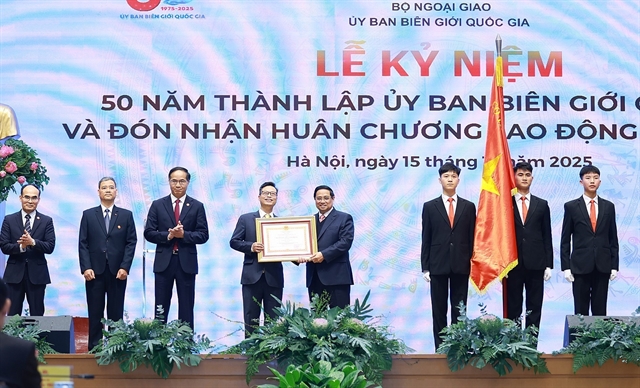 Economy
Economy

Cement and clinker consumption in the country grew over 15 per cent, to 24 million tonnes, from the beginning of this year, meeting 32 per cent of the year’s target.
HÀ NỘI - Cement and clinker consumption in the country grew over 15 per cent, to 24 million tonnes, from the beginning of this year, meeting 32 per cent of the year’s target.
According to the Department of Building Materials under the Ministry of Construction, the growth was due to the increase in construction activities during the current dry season. Cement consumption in the second quarter was expected to be higher than the first quarter, it added.
Local consumption in April alone reached 6.07 million tonnes, surging 17 per cent, compared to the same month last year.
Of the total, 2.4 million tonnes of cement were sold by the Viet Nam Cement Industry Corporation (VICEM), 31 per cent higher than its sales in the corresponding period in 2015, vietnamplus.vn reported.
In the first four months, 18.85 million tonnes of cement were sold in the domestic market, a year-on-year increase of 17.4 per cent. Meanwhile, cement exports remained stable with 5.15 million tonnes, a year-on-year increase of 0.4 million tonnes.
According to the department, thriving cement consumption in the second quarter was spurred by improvements in the real estate market. However, cement prices are still stable, it said.
The cement industry plans to produce 75 million tonnes to 77 million tonnes of cement this year.
The ministry predicted that the local cement industry would face difficulties in selling cement this year, especially in exports. Therefore, many cement projects have been taken out of the national plan of cement development for this year and beyond, and the nation would not have more cement production lines to operate this year, Công Thương (Industry and Trade) newspaper reported.
Nguyễn Quang Cung, chairman of Việt Nam Cement Association, said the local market saw fierce competition among cement producers and the cement industry needed restructuring, as per conditions of the merger.
Many cement enterprises have merged with VICEM to increase their competitive ability. These include Hạ Long, Sông Đà, Sông Thao, and Holcim, in addition to Lafarge, Cung said.
To promote consumption of cement, avoid pressure from inventory and have selling solutions, Vicem requires its member companies to take full advantage after improving the distribution system, reviewing sales policies, increasing competitive ability, and seeking large export markets.
Lê Thành Long, general director of VICEM Hoàng Thạch, said his company has focussed on developing a brand, completing the system of major distributors and developing a system of shops with high standards to retain market share and expand further business. – VNS




